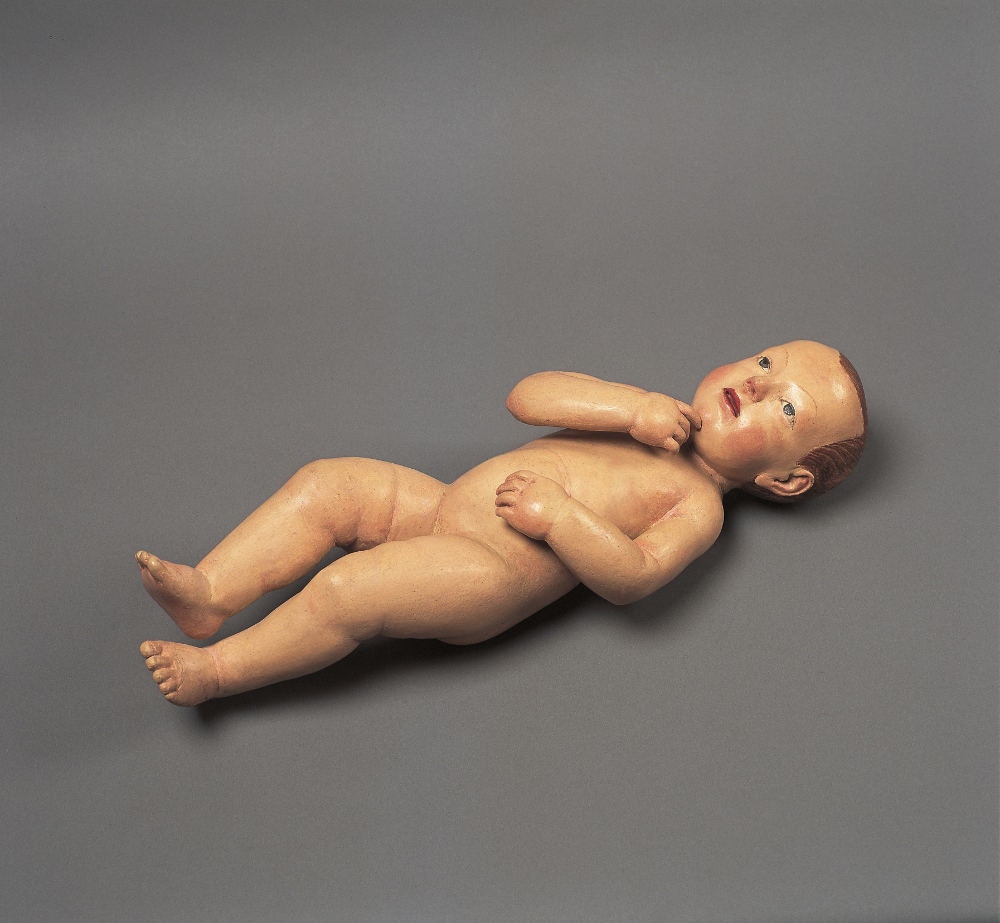
My most beloved object in the exhibition is this near life-size statuette of the Christ Child. I saw it in the Monastery of Sorelle Povere in Camerino, before the convent was severely damaged during the terrible earthquake last year. Back in 2014 the figure was waiting for me in a small display case, in a quiet chamber, where I could contemplate the baby’s personality and admire the realistic quality of carving and polychromy. I was struck by the skill with which the artist captured the stubbornness of the Christ Child, who according to the description from the life of its original owner, Saint Camilla da Varano, refused to give up the ring, which He still holds on His index finger.
When I saw a photo of this figure amidst the ruins of what was its home for over five hundred years, my immediate reaction was that the statuette endured the tragedy in order to travel for our exhibition and speak in person about the specific devotional practices it stimulated. We are very grateful to the nuns for letting us show their treasure to the public and I hope you will fall in love with it as I did.
Zuzanna Sarnecka Phd candidate, Domestic Devotions Project




